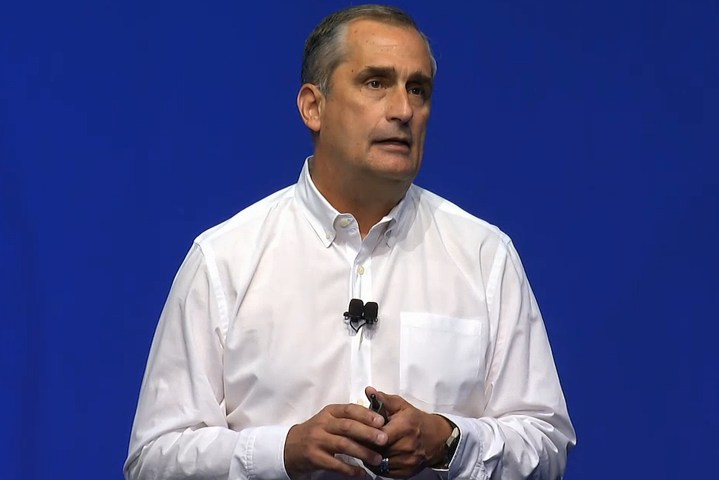
As Krzanich explained in his keynote presentation, today’s cloud is made by people: Facebook posts, messages on Twitter, emails, pictures and files shared from cloud drives. The average person generates around 600 to 700 megabits of data each day. But by 2020, these same individuals are expected to generate around 1.5GB of data on the Internet each day. Even more, airplane data will use 40,000GB per day and a smart factory will generate 1 million gigabites per day. That’s a lot of data residing in the cloud.
To analyze and interpret it all, the data will need to be distributed across a massive number of computers given that one single machine can’t handle it all. It will need computing at “the edge, the middle, and in the cloud,” Krzanich explained, and will be made possible by Intel technology. Data fuels the cloud, and without it, the cloud is empty. Thus for developers, Intel provides tools to analyze all that data locally, “in the fog between,” or in the cloud itself.
Thus enter the Intel Curie module for sending “insightful” data into the cloud. It’s nothing new of course, a tiny computer module for devices and wearables to digitize nearly every movement of the end-user. This Curie chip was actually demonstrated before the keynote began in a set of gloves used to play virtual synthesizers. The musician merely moved his fingers in the air to play virtual keys, and moved his hands to virtual sectors in the air to play different sounds (audio fonts).
“In this small size, we packed the Intel Quark SoC, a Bluetooth Low Energy radio, a series of sensors, battery-charging capability, and an innovative pattern matching engine,” Krzanich told the audience. He added that Intel has released a variety of hardware and software tools for Curie over the last several years, and now the company is adding to that arsenal with the release of the Knowledge Builder toolset.
Previously, developers had to send sensor data from systems like Curie to another computing system, like a large computer, or in some cases, into the cloud, where the pattern matching would occur. However, developers can now do all of that within the current Curie module itself. That all said, Intel’s Knowledge Builder toolkit allows developers to create an intelligent sensing application that runs directly on the Curie module using its on-chip pattern-matching engine.
“It accelerates the process by using example data to train new algorithms,” he said. “So rather than having to use data scientists to understand those patterns, you can truly just use the motions themselves, and do them real-time.”
That essentially means Curie can be used to identify any special movement, such as pattern-matching a karate kick by placing the module on someone’s leg, or placing the module on someone’s wrist and pattern-matching his/her tennis swing. First several motions are captured, and then those motions are imported into Knowledge Builder to identify those real-world movements. After that, Knowledge Builder analyzes the system and performs all the data science locally for the developer.
Right now, “select customers” are using Knowledge Builder for sports applications, health care, manufacturing, and more. The solution will become broadly available in Q1 2017 for developers to create applications that rely on Intel’s Curie module.


